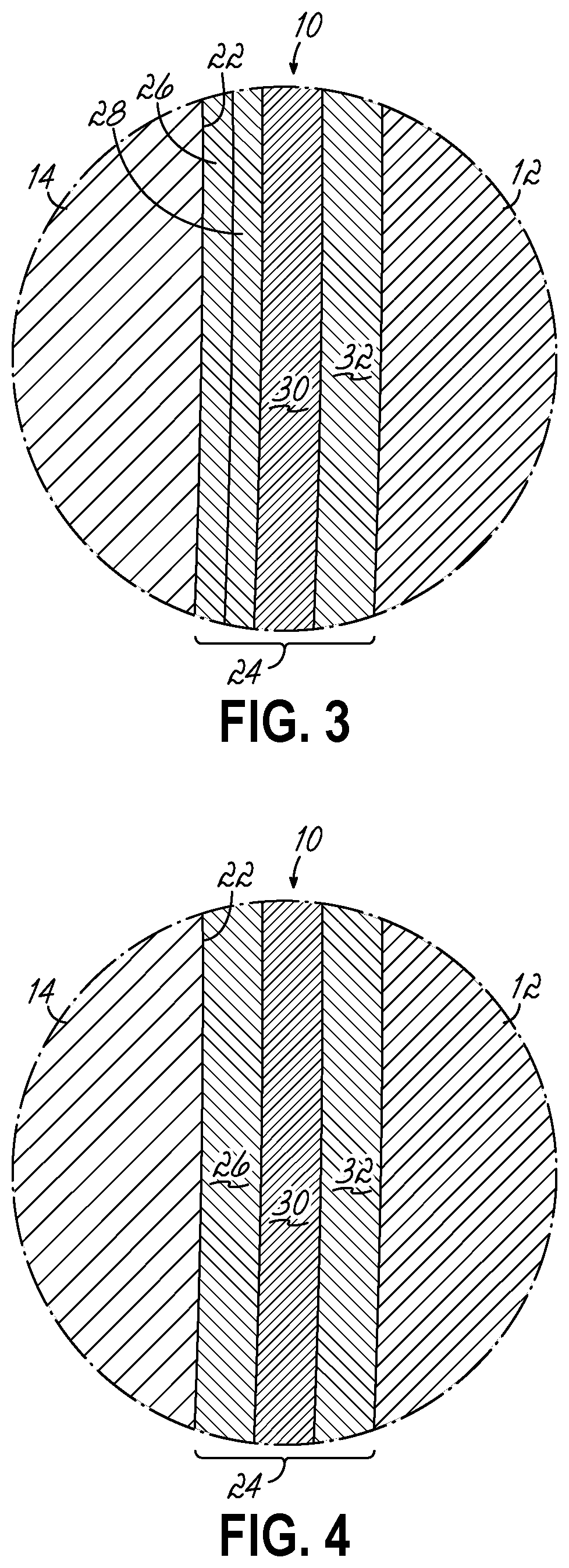Orthodontic adhesives and methods of using same
a technology of adhesives and orthodontic brackets, applied in the field of orthodontic adhesives and adhesive systems, can solve the problems of long office chair time during the entire bonding procedure, high cost of bonding orthodontic brackets to teeth, and time-consuming process
- Summary
- Abstract
- Description
- Claims
- Application Information
AI Technical Summary
Benefits of technology
Problems solved by technology
Method used
Image
Examples
example 1
[0066]A primer solution of 7.5 wt. % 10-Methacryloxydecyl Dihydrogen Phosphate (MDP) that is modified to have a lower acid value (i.e., purified by removing HCl byproduct), 0.005 wt. % Catechol-methacrylate (CMA) (using eugenol as a backbone for the CMA), and 0.0075 wt. % butylated hydroxytoluene (BHT) in a balance of acetone was applied with a brush to a bovine tooth that was prepared by wiping it with a tissue. No other preparation techniques were used to prepare the surface of the tooth.
[0067]A second solution of 10 wt. % photocleavable bis-methacrylate, 0.01 wt. % N,N-di-methyl-amino-ethyl methacrylate (DMAEMA), 0.01 wt % camphoroquinone (CQ), and 0.001 wt % BHT in a balance of acetone was applied with a brush to the dried primer. This forms a debonding layer.
[0068]Ortho Solo® sealant is applied to the debonding layer.
[0069]Grēngloo® adhesive is placed on an orthodontic bracket and then is pressed against the debonding layer with the adhesive in contact with the debonding layer....
PUM
| Property | Measurement | Unit |
|---|---|---|
| time | aaaaa | aaaaa |
| time | aaaaa | aaaaa |
| thick | aaaaa | aaaaa |
Abstract
Description
Claims
Application Information
 Login to View More
Login to View More - R&D
- Intellectual Property
- Life Sciences
- Materials
- Tech Scout
- Unparalleled Data Quality
- Higher Quality Content
- 60% Fewer Hallucinations
Browse by: Latest US Patents, China's latest patents, Technical Efficacy Thesaurus, Application Domain, Technology Topic, Popular Technical Reports.
© 2025 PatSnap. All rights reserved.Legal|Privacy policy|Modern Slavery Act Transparency Statement|Sitemap|About US| Contact US: help@patsnap.com



